15 Nights / 16 Days

These were the words that Amir Khusro used to describe Kashmir. He was a poet during the Maluk Dynasty when they entered through the Karakoram into Kashmir. This is the earliest reference of Kashmir as Paradise. Kashmir continued to be the favourite destination for rulers to come. The most famous of them were Shah Jahan and Aurangzeb who used Srinagar as their summer capital. A plethora of gardens was built by the Mughals that added an organised layer to the free-flowing beauty of Kashmir.
Kashmir’s beauty lies essentially in its picturesque views and the simplicity in its natural landscape. Rows of cypress trees along the banks of Jhelum nestled between the foothills are fresh breath against wherever else you come from. The meadows jutting out of supple hills throw a range of shades at you, leaving a sense of contentment behind. Kashmir has a unique way of seeping into your being with its surrealism.
If there is heaven on the earth, it has to be Kashmir only. Embellished with oodles of natural marvels, Kashmir is a land of beauty and elegance. The exquisiteness of this hill station can be experienced at its best when you pay a visit to it. Visit all the famous tourist destinations of Kashmir, be it the capital city - Srinagar, the Vale of Kashmir – Pahalgam or the Meadow of Flower – Gulmarg. From enjoying a houseboat stay in Srinagar to sightseeing tour in Pahalgam, to having some fun in the snow in Gulmarg, Kashmir Tour Package covers all.
Ladakh – Introduction
Set amidst the epic Himalayas, Ladakh is a rustic and heavenly beautiful travel destination. The rugged valleys and mountains, winding roads coupled with the vibrant cultural life maintain the exuberance and charm of this region.
The iconic Magnetic Hill, the turquoise coloured Pangong Lake, the confluence of two mystical rivers, ancient and awe inspiring monasteries and the highest passes are a few of the marvellous attractions of Leh and Ladakh in general. The wide array of trekking routes will satiate your soul and enrich the senses. The moon-like desert mountains continue to be an exceptional destination for adventure seekers and admirers of Buddhism and phenomenal mountain vistas.
Leh is the joint capital and largest town of the union territory of Ladakh in India. Leh was also the historical capital of the Himalayan Kingdom of Ladakh, the seat of which was in the Leh Palace, the former residence of the royal family of Ladakh, built in the same style and about the same time as the Potala Palace in Tibet. Leh is at an altitude of 3,524 metres (11,562 ft), and is connected via National Highway 1 to Srinagar in the southwest and to Manali in the south via the Leh-Manali Highway.
So, pack some travel essentials with you to explore the most enthralling destination of India and bring back souvenirs of endless memories with you.
On your arrival at Srinagar airport, our representative will assist you with transfers to your pre-booked hotel/houseboat. On your arrival at the Srinagar Airport, you will be taken for a short drive through the heart of New Srinagar city, passing the Abdullah bridge which connects the banks of the Jhelum river.
After freshening up, proceed for city tour of Srinagar. Visit the famous Mughal gardens of Nishat (The garden of pleasure) & Shalimar (Abode of love). Visit Chashma Shahi, Shankaracharya Temple and Pari Mahal.
Nishat Bagh: The Garden of bliss laid down by Asif Khan father of Empress Noorjahan in 1633AD on the bank of Dal Lake with Zabarvan Massif at the back. In Nishat commands magnificent view of the Lake and the snow-capped Pir Panchal range to the west of the valley.
Shalimar Bagh: The Abode Of Love. Is said to have been a village, built by Paravarassna II. He used to stay here when on a visit to Sukhswami a saint living near Harwan. In 1619 Jehangir ordered a garden to be laid out this spot, calling it, Ferrah Bakkash (Delightful). In 1727 A.D Zaffar-Khan. A governor during the reign of Shah Jahan made an extension of it and called it Faiz Baksh (Bountiful).
Cheshma Shahi or the Royal Spring was laid by Shah Jahan in 1632 A.D. It is 9 Km. from the city centre and is famous for a spring of refreshment digestive water, having a natural spring of Pure, Cool and Sparking water.
Two kilometers uphill from Cheshma Shahi is situated the Pari Mahal ( The palaces of Fairies), a school of astrology founded by Prince Dara Shikoh, Emperor Shah Jahan's eldest son who was killed in the war of succession. The Cheshma Shahi-Pari Mahal area has been developed into a Tourist Village.
The Shankracharya Temple made of ancient grey stones adorns thickly wooded Shankaracharya Hill. It was earlier known as Takht-i-Sulaiman, meaning Throne of Solomon, but has been renamed after a saint who preached enlightenment here in AD 750. Dedicated to Lord Shiva, this temple rests at an altitude of 1000 feet and can be reached in 10-15 minutes by stairs. Enjoy stunning views of the locales from up there after offering prayers to Lord Shiva.
Later in the evening, we will take you for 1-hour Shikara ride in the world-famous Dal Lake, enjoy the beauty that God has graced this city with, which is often compared to Venice. You will get views of some very interesting places around the Lake.
Dinner & overnight stay at Srinagar
After breakfast in the morning, we will drive towards Pahalgam (2133 mts ) also known as ‘The valley of Shepherds or Trekker's Paradise.
Pahalgam is the most famous place for Indian Film Industry. On the way visit Awantipura ruins and saffron fields. One of the most beautiful places on earth, the town of Pahalgam offers breathtaking views. Pahalgam is also the entry point for the famous Amarnath Cave, a holy site for Hindus. Pahalgam is situated at the union of the streams flowing from Sheshnag Lake and the Lidder River. Pahalgam is now Kashmir's premier resort; cool even during the height of summer when the maximum temperature does not exceed 25 degrees Celsius.
Long before this little village 92 Km east from Srinagar, 2400 meters above sea level, became the popular holiday resort it is today, it was the preserve of nomadic shepherds. Its rugged charm has remained un-spoilt by progress, while a bustling main street and its wide range of tented camps, hotels and lodges have established it as a favorite holiday resort.
Pahalgam spreads along the banks of the Lidder, which is the focal point of interest to the angler. The trout fisherman delight, the Lidder is divided into three fishing beats between Mattan and Phalgham, and the trout are so thick that even the first time fisherman can land a good catch.
Pahalgam is perhaps best known as the take off point for trek into the surrounding mountains. The resort is well geared to meet the demands at onward going trekkers and camping equipments is readily available, as are ponies and porters. Walking the Lidder valley is scenically most rewarding, through forests of virgin pine, fording crystal clear mountains streams and through meadows of wild flowers, higher up the valley.
Upon arrival, proceed for full day ABC sightseeing tour (optional).
Aru Valley: Overlooking the majestic snow-capped peaks of Himalayan Range, Aru Valley is a pristine scenic village situated in the region of Trans-Himalaya. Clear blue canopy over the head, misty surroundings, whispers of the native pines and conifer forests and beautiful meadows create a captivating diorama for travelers thronging the place. Though the village is the smallest hill station in the state, but still its breathtaking beauty and interesting activities like trekking, hiking and horse riding make it one of the most popular tourist places to visit in Pahalgam.
An excellent choice for both leisure seekers and adventure lovers, Aru Valley enriches the glory of Jammu and Kashmir tourism by being the starting point of trekking expeditions to Kolahoi Glacier and Sonmarg. Apart from the trekkers, the village also caters to the skiing desires of tourists who love to visit the place during winters. Aru Valley is located at a distance of about 12 km from Pahalgam.
Betaab Valley: Earlier known as Hagan Valley or Hagoon, Betaab Valley got its present name after the blockbuster Bollywood movie ‘Betaab’ was shot there in 1983. A combination of picturesque surroundings, the valley falls on the way to Amarnath Temple Yatra and is one of the three angelic valleys of Pahalgam; the other two being Aru and Chandanwadi.
Encircled by mountains featuring deodar and pine forests, Betaab Valley is a perfect gateway to enjoy the heavenly pleasure of Mother Nature. The sights of colouring beds of flowers amid the lush walnut and willow vistas make the entire panorama quite stunning casting a spell of magic on this land of eternal beauty. The experience is even more heightened by the musical whispers of several birds. Being a precious jewel of Jammu and Kashmir tourism, Betaab Valley is among a handful of Pahalgam tourist places to visit that should not be missed. Situated at a walking distance from the main center of Pahalgam, the valley is also an excellent camping site for trekkers and explorers.
Chandanwari: Nestled at an elevation point of 2,895 meters above sea level, Chandanwari is situated on a motorable road, around 16 km from main Pahalgam. Blessed with Goddess Nature in its full bloom, the valley is mainly known as the starting point of he sacred Amarnath Temple expedition, which is an annual event held during the months of July – August. Along with special significance, this pristine valley is also known for its snow bridge and serves as an excellent hiking destination among the troves of Jammu and Kashmir tourism. Whether you like a rejuvenating and off-track destination for your honeymoon or want to explore the eternal beauty of Pahalgam, Chandanwari is an ideal stopover to unwind in the lap of nature. Sheshnag Lake and Panchtarni, the two beautiful spots en route to Amarnath Temple, are just 12 km and 23 km away from Chandanwari respectively.
Return to your hotel in the evening. Dinner & overnight stay at Pahalgam.
Today after breakfast, check out and drive towards Srinagar. You can visit Baisaran today.
Baisaran: Often dubbed as ‘Mini Switzerland’ because of its long dark meadows resembling the ones in Switzerland, Baisaran is an eye-catching meadow, located just 5 km away from Pahalgam. The dense pine forest that gives the green carpet look to the meadow provides a contrasting hue to snow-capped peaks of the surrounding mountains. A major tourist place to visit in Pahalgam, a voyage to the meadow is truly a treat for the senses. Additionally, Baisaran is also an ideal campsite for trekkers who want to move further up to Tulian Lake. Accessible through ponies from Pahalgam, this off-beaten track of Jammu and Kashmir tourism offers panoramic sights of the town and Lidder Valley.
On the way back, visit the Saffron fields near Srinagar. Saffron is a rare spice which grows only in few places in the world. Derived from the flower of Crocus Sativus or Saffron Crocus, the spice has exceptional medicinal properties and is commonly used in cooking and traditional medicines. In Kashmir, saffron grows in a small town known as Pampur which is about 13 kilometers away from Srinagar. During autumn months, when the flowers bloom, you will be able to see rows and rows of purple flowers in Pampur. A walk amidst these flowers is certainly a beautiful experience.
Dinner and overnight stay at Srinagar hotel/houseboat.
Today after breakfast, leave for Gulmarg (situated at 2730 mts above sea level) which is also known as “Meadow Of Flowers” & has a famous Golf course during summer.
Gulmarg has one of the best ski slopes in the world and highest golf course with 18 holes. If weather permits one can also have the view of Nanga Parbat, the naked mountain that is over 26,000 ft. and dominates the entire region. If you are in Gulmarg then it goes without saying that do not forget to indulge in the best of all snow adventure activity, skiing. Under the expert guidance of the ski-instructors here your nervousness and high expectations will eventually get blended into confidence. Apharwat, Khilanmarg, and Kongdori peaks are for skiing in Gulmarg.
Once you arrive at this picturesque location, head straight to Gondola station & board the Gondola at the cable station at Gulmarg that will take you up to Kongdori at an altitude of 3099.6 meters, it is almost a vertical, upright ride that lasts for about 10 minutes. The ride goes through tall fir trees and opens out to grassy slopes below, dotted with wildflowers or snow, during winters. At the Kongdori station, if it isn’t hazy or cloudy, get astounded by the alluring views of the Nanga Parbat looming majestically in the distance. You may also be able sight the peaks of K2 on a clear day. Ask the locals here to point the LOC, which is clearly visible from here. The mesmerising snow peaks seem close enough to touch here.
The phase 2 of the Gondola ride will take you to Apharwat. The majestic views of the lush hilly terrain and picturesque surroundings is truly a sight to behold. The ride also passess over Khilanmarg, a meadow adorned with colourful flowers.
In the evening, drive back to Srinagar. Dinner & overnight stay at Srinagar.
After breakfast & checkout from the hotel, start your journey on 434 KM long Srinagar – Leh Highway also known as National Highway – 1D (NH – 1D). It is the most reliable and one of the only two ways to reach Leh – Ladakh by road, the other one being Manali – Leh Highway Generally, travelers or adventure lovers from all over the world loves or dreams to undertake this road trip of their lifetime by covering both routes connecting Leh – Ladakh to rest of India. Apart from being famous for its enchanting views, this highway holds a strategic importance for India and being close to LOC, you see the heavy army presence on it when you travel through Srinagar – Leh Highway.
The highway runs alongside the Indus River and through some extremely harsh and barren terrain including the three high mountain passes named Zozi La (3528 Mtrs), Namki La (3815 Mtrs) and Fotu La (4108 Mtrs). In any case, Srinagar – Leh highway offers some breathtaking landscapes ornamented by various historical and cultural constructions which are just like a dream treat for any traveler driving/riding through Srinagar – Leh Highway.
On the way, visit Sonamarg (Known As Meadow of Gold) at 2690 Mtrs. You will be mesmerized by the greenery sprinkled around the snow covered mountains. One can also enjoy a pony ride that will take you to Thajiwas Glacier (at your own cost). One can see snow here all around the year. Sonamarg is also known as Gateway to Ladakh. Drive through Drass (famous as the second coldest inhabited place in the world) and then cross mighty Zoji-la Pass (11,500-ft. / 3,505 m), often called the daddy of passes to reach Kargil.
Dinner & Overnight Stay at hotel in Kargil.
After breakfast, start your drive towards Lamayuru.
Today we will visit the Aryan Valley, located in the Batalik sector of Ladakh. The five main villages of the region are Dah, Hanu, Biama, Garkon and Darchik. Other smaller villages are also scattered across. The visitors are required to obtain an inner line permit to visit these Brokpa villages. The villages have both Buddhist and Muslim population and also have their own animist pantheon of Gods. Residents of Dah Hanu are best known as Indo-Aryan breed. Dard people of Dah and Hanu have an Indo-European appearance with high cheekbones and sharp features. They look quite different from other Ladakhi people. Dha and Hanu are two separate villages in Dha-Hanu valley of Ladakh, about 160km from Leh.
After spending some time in Aryan Valley, we will visit Mulbekh Monastery, which is believed to have been built around 800 years back. Mulbekh Monastery consists of two gompas, Serdung Gompa of Drukpa sect & Rgaldan-se Gompa of Gelugpa sect. The monastery is believed to have been built around 800 years back by the students of the Tibetan scholar, Lotsawa Rinchen Zangpo. Mulbekh Monastery stands atop a crag located almost 656 feet above the road, and is reached by a steep footpath. The altitude of the monastery is believed to be almost 11,495 feet. The 30 feet tall statue of Maitreya Buddha, carved on an enormous stone slab, overlooks the Leh-Kargil highway. The statue reflects a mix of Buddhist and Shaivite influences. There are ancient inscriptions located in close proximity to the statue, along with an edict issued by King Lde, to the local people, to abandon the practice of sacrificing goats.
Later visit Lamayuru monastery, one of the oldest Monastery of Ladakh and enjoy the view of Moon Landscape. Lamayuru is roughly 100 km before Leh, right after Fotu la, the highest pass on the Srinagar Leh highway. A peculiar landscape near Lamayuru on Leh-Kargil Road is the MoonLand. It is called so fondly, because the landscapes here are said to be like that of the moon. It has also been said often, that on a full moon night, the area is an extraordinary sight to behold, something one doesn't get to see everyday, making it a must visit area of the town.
Dinner & Overnight Stay at hotel in Lamayuru.
Today after breakfast, we will drive towards 1000-year old Alchi monastery, the only Gompa in Ladakh region on flat ground. Drive past a collection of chortens to the picturesque village of Alchi. Unlike other gompas you actually walk downhill through the village to the unassuming entrance to the Chos-kor (religious enclave) – a complex of five unique temples surrounded by a white mud wall with a patchwork of cultivated fields alongside. It is a charming walk winding past village homes amidst apricot trees, with channeled water gurgling alongside as you approach the DharmaChakra Monastery.
Later we will visit Likir Gompa, which towers over a village of the same name. The 5km road completes a half circle leading to the top and provides great views, from different angles, of the stark white cluster of buildings and recently built golden Buddha statue reaching towards the heavens. Founded in the 11th century under the direction of Tibetan Monks, it was taken over by the Gelugpa order in the fifteenth century.
Your next stop will be at Sangam (confluence), located at Nimmu on Leh-Srinagar highway, is the confluence of Indus (Sindhu) and Zanskar rivers. Zanskar river coming from Zanskar valley of Union Territory of Ladakh meets the Indus river at Nimmu and offers a spectacular view to the visitors. Indus is the lifeline of Ladakh which irrigates the dry land of the valley. Indus river is originated from the great Himalayan ranges and Zanskar river originates from Zanskar ranges. Zanskar river is shiny blue in colour, on the other hand Indus looks a little green. The view is nothing short of a miracle.
Your next stop can be at Gurudwara Pathar Sahib. According to legend, in 1517 when Guru Nanak was on his way back after a two year journey to Nepal, Sikkim and Tibet, he stopped and spent time here. The Gurudwara holds the rock with the imprint of Guru Nanak’s sitting body and is visited by people of all the faiths.
The last stop on your today's journey can be the monastery at Spituk, 8 Kms from Leh; it stands prominently on the top of hillock commanding a panoramic view of the Indus Valley for miles. This 15th century Gompa houses interesting icons and thankas of Lord Buddha. The Gompa also houses a collection of ancient masks, antique arms, and an awe-inspiring image of Mahakaal. The face of the Kali image is kept covered and is revealed only at the annual function in January every year.
Reach Leh by evening. Dinner & overnight stay at hotel in Leh.
It is advisable you use this day to acclimatize to the low air pressure at higher altitudes (11,562 ft.) of Leh. In the evening, we will take you to Shanti Stupa and Leh Palace.
Shanti Stupa is a Buddhist white-domed stupa (chorten) on a hilltop in Chanspa, Leh district, Ladakh, in the north Indian state of Jammu and Kashmir. It was built in 1991 by Japanese Buddhist Bhikshu, Gyomyo Nakamura and part of the Peace Pagoda mission. The Shanti Stupa holds the relics of the Buddha at its base, enshrined by the 14th Dalai Lama. The stupa has become a tourist attraction not only due to its religious significance but also due to its location which provides panoramic views of the surrounding landscape.
Leh Palace is a former royal palace overlooking the Ladakhi Himalayan town of Leh. Modelled on the Potala Palace in Lhasa, Tibet, the palace was built by King Sengge Namgyal in the 17th century. It is nine storeys high; the upper floors accommodated the royal family, while the lower floors held stables and store rooms.
Dinner & Overnight Stay at hotel in Leh.
After breakfast in the morning, we will drive to Nubra Valley. En route visit Khardung-La, the highest motorable road in the world at 18,380ft. The pass on the Ladakh Range lies north of Leh and is the gateway to the Shyok and Nubra valleys. The Siachen Glacier lies part way up the latter valley. Built in 1976, it was opened to public motor vehicles in 1988 and has since seen many automobile, motorbike and mountain biking expeditions. Maintained by the Border Roads Organization, the pass is strategically important to India as it is used to carry supplies to the Siachen Glacier.
The foremost tourist attraction in Khardung La is the excitement of travelling to the highest motorable road itself. There are spectacular views that greet you along the way, that of Leh City & the surrounding mountain ranges. Because of extremely low oxygen and air pressure, you will probably suffer from Altitude Mountain Sickness, or AMS. It is best, therefore, not to spend more than 15 minutes on the K-top.
Drive towards Siachen Base Camp situated at 12000 ft ASL. Visit The Siachen War Memorial which has been constructed at the Siachen Base Camp in the fond remembrance of all martyrs who have made supreme sacrifice for the 'Izzat and Glory' during Operation Meghdoot. 'Quartered in snow, silent remain, when the bugle calls, they shall rise and march again' are the wordings inscribed on the top of first wall, which aptly describes the brave soldiers who laid down their lives for the honour of motherland. Second wall mentions the operation that being fought in the geostrategically important region and third wall carries the roll of honour of Siachen; where great courage and fortitude is the norm. The Memorial is located on the road from Khalsar to Siachen Base Camp of the Army. Visiting hours are from 0700 hours to 1300 hours.
Later visit Panamik, located about 150 kilometers from Leh, in close proximity to Nubra Valley, it is a small sleepy village situated at an altitude of 10,442 feet above sea level. Panamik is also the final frontier village of India close to the Indo-Tibetan border. The top tourist attraction in Panamik is the hot springs. While there are other famous hot water springs across the country, for example, Bakreshwar in West Bengal & Manikaran, this is the only “hot springs village” in India. The hot spring water in Panamik contains high amounts of sulfur, and is believed to possess a lot of medicinal properties. A lot of tourists, and locals, take a dip in the water, despite its being quite hot, as it is said to cure skin diseases & rheumatism.
Nubra Valley is popularly known as Ldorma or the valley of flowers. It is situated to the north of Ladakh between the Karakoram and Ladakh ranges of the Himalayas. Arrive at Hunder & check in at Hotel. Later enjoy the Camel ride on sand dunes. Like an oasis amidst the cold desert, Hunder Sand Dunes are beautiful beyond imagination. Located at an altitude of 4,000 meters, the desert is cut across by a gentle stream and the beautiful countryside. With such stunning landscapes against the backdrop of the snow-clad mountains, the Hunder Sand Dune looks nothing less than a fairy world. Beyond its beauty, the dunes are home to the Bactrian Camels, the major key players during the ancient silk route, and Pashmina Goats. Tourists can also go on a safari on the Bactrian camel that will take them back to the time when the trade was quite prominent within Central Asia and to the remote village of Hunder.
Dinner and overnight stay at Hotel/Camp in Nubra Valley.
After breakfast, drive to Turtuk (which opened for the tourist in 2010), a place annexed by India only after the 1971 war, the village of Turtuk is one of the only Balti villages in India and lies right next to the LOC. The village with the whole population of muslims still
resembles mini Pakistan. The village's inhabitants still use traditional utensils which are crafted from stone.
Explore the village of Turtuk the village offers views of beautiful valley, part of Shyok Valley. On clear days you can have glimpse of K2 mountain peak located across the border in Pakistan. Though a muslim village, there are few gompas located on the plateau above Shyok River and there is an old royal house to see in village. Return to Nubra by the evening.
Geographically, Turtuk lies in the Baltistan Region and is one among four such villages in India, the other three being Tyakshi, Chalunkha and Thang. The residents of Turtuk and its adjoining villages speak Balti language as ethnicity.
Turtuk is the last outpost of India at Thang after which Pakistan-controlled Gilgit- Baltistan begins. Turtuk is very famous for the availability of different varieties of fruits especially apricots and its artefacts. Turtuk was opened to tourists in 2010. Turtukis one of the few places in India where one can witness Balti culture and heritage.
Dinner & overnight stay in Nubra Valley.
Today after breakfast, visit Diskit Village, the impressive 32 meter tall statue of Maitreya Buddha is visible from a distance as soon as one enters the Diskit Region. Perched atop a hillock, facing the Shyok River towards Pakistan and complementing the surroundings, Maitreya Budhha was constructed in 2006 keeping in mind three objectives - protection of Diskit Village, prevention of further war with Pakistan, and to promote world peace. The statue was inaugurated by H.H Dalai Lama in 2010. The imposing and colourful image, also known as Jampa is mounted on a large hall that has a preserved a huge drum and a collection of statues and Buddhist literature. One can see statues of Shakyamuni Buddha and Guru Rimpoche inside the hall.
In the evening, enjoy camel ride on famous sand dunes of Nubra valley.
Dinner & overnight stay in Nubra Valley
After early breakfast, start your scenic drive towards Pangong Tso. This route follows the Shyok River from Agham to Shyok Village, 36 km. You will have to cross the water streams on the way. Stop at Shyok village for a quick bite and snacks and move to Pangong Tso which is perhaps one of the most amazing lakes in Asia which changes its color 4 – 5 times a day.
The Pangong Lake or “lake of the great hollow” is considered as the largest lake in Asia. The water is clearer though salty. It is believed that these waters must have been fresh at some ancient age. The mountain ranges at the Pangong’s north-western extremity are of lime stones which seem to affect its water. The Crystal clear salty water shines in many shades of blue depending upon its depth. It literally changes shades with sunlight. With a backdrop of mountains of various hues and colors, it is a sight for the Gods. At an elevation of 4300 meter, the air is cool even in summers at Ladakh. Pangong Lake is about 4 Km wide on the average and at least 136 Km long. The extent of the known portion is, therefore, upwards of 250 square miles (400 sq km).
At evening, enjoy the breathtaking views of Pangong Lake. Dinner & overnight stay at Pangong Lake.
After breakfast at campsite, we will start our journey to Leh. En route you will cross Spangmik, Lukung, Tangste, Durbuk and Chang-La.
Ladakh is famous for its high altitude mountain passes as some of the highest motorable road are located in the Ladakh region.. The third highest motorable mountain pass in the world, Chang La Pass, situated at an altitude of 5,360 meters above sea level, is named after the Sadhu Changla Baba. The Pass temple was built after him only. The place is famous for its scenic and serene natural beauty which attracts tourists from all around the world. The nearest settlement to this place is the little hamlet of Tangste. It is the main gateway for the Changthang plateau situated in the Himalayas.
Stop here for quick tea and snacks and move towards Leh.
On the way back, we will be visiting Thiksey Gompa, Shey Gompa, and Rancho school.
Thiksey Gompa is located close to Shey and is about 17 kms from Leh. This monastery is considered to be one of the most beautiful monasteries in Ladakh and belongs to the Gelukspa order.
Shey Gompa is about 15 kms from Leh. It used to be the summer palace of the kings of Ladakh. There are lots of Stupas and Gompas built around the palace. Shey Gompa was built in the beginning of 17th century AD by Deldan Namgyal. One of the major attractions in Shey is the 12m Shakyamuni Buddha statue located inside the Dresthang Gompa.
Stop at Rancho School (popularized by movie 3 Idiots) on your way back.
Reach Leh by evening. Evening free for leisure. You can check out any of the fancy cafes the town has to offer.
Dinner & Overnight stay in the hotel.
Embark on Leh–Manali Highway, a 475 km long highway connecting Ladakh in Jammu and Kashmir state and Manali in Himachal Pradesh state. It is open for only about four and a half months in a year in summer between May or June, once the snow is cleared, and mid-October when snowfall again blocks the high passes. It connects Manali valley to Lahaul and Spiti valleys and Zanskar valley in Ladakh. The average elevation of Leh-Manali highway is more than 4,000 m (13,000 feet) and its highest elevation is 5,328 m (17,480 ft) at Tanglang La mountain pass. It is flanked by mountain ranges on both sides featuring some stunning sand and rock natural formations. The highway crosses many small streams of ice-cold water from snow-capped mountains and glacial melts without a bridge and it requires driving skill to negotiate fast-flowing streams.
Drive through More plains of the Kyang Chu Thang, which is a flattened 45 km straight road from Devring (4500m). On the plains one can see tiny colonies of Marmots and the wild herds of Yak. After the plains, you will be welcomed with Gata Loops (21 hair pin bends). J&K Border ends here and you enter into Himachal Pradesh.
Cross Barlacha-La (4892m.) pass, which is one of the most dangerous pass among other, passes on the way to Manali. One can see one of the most excellent panoramic views of the high rising/sky touching mountains. On top of Baralacha La, Suraj Tal welcomes you. Sarchu is a military base and has a police check post.
Later drive through Zingzing Bar, Patseo, Darcha, and finally reach Jispa after a long and tiring but spectacular road journey.
Jispa is a village in Lahaul and located 20 km north of Keylong and 7 km south of Darcha along the Manali-Leh Highway and the Bhaga river. There are approximately 20 villages between Jispa and Keylong.
Dinner & overnight stay at campsite in Jispa.
Today after breakfast, drive towards Manali, crossing Rohtang Pass on the way. Reach Manali by late afternoon.
Manali, at the northern end of the Kullu Valley in Himachal Pradesh, is a hill station situated at a height of 2050m (6398 ft) in the Himalayas. Situated on the Beas river (Vyaas in Hindi) and near its source, it is a popular tourist spot for Indians in summer and a magical, snowcovered place in winter. A staging point for a number of treks (Beas Kund, Chandrakhani Pass) and sports such as white-water rafting, Manali is also on the road to Ladakh via the valley of Lahaul and Spiti and the Rohtang Pass which is the main attraction near Manali.
Dinner and overnight stay at Manali hotel.
After breakfast, check out from the hotel and begin your half day city tour visiting Hidimbi Devi Temple, Vashisht Temple, Tibetan Monastery and Van Vihar near Mall Road.
At a distance of 2 km from Manali Bus Stand, Hidimba Devi Temple also known as the Dhungri Temple is an ancient cave temple built in 1553 by Raja Bahadur Singh. The temple is dedicated to Hidimbi Devi, wife of Bhima, one of the Pandavas from Mahabharata epic.
The Hidimbi Devi temple is 24 meters tall and consists of three square roofs with timber tiles, surmounted by a cone-shaped fourth roof that is covered in brass. The wooden facade and windows of the temple are richly carved. The wooden door frame is ornamented with carvings of various deities and other designs. The walls of the temple are strangely decorated with horns of animals. The base of the temple is made of whitewashed mud-covered stonework.
Vashisht Temple in Manali is dedicated to sage Vashisht, the Kula guru of Lord Rama in the village Vashisht across the River Beas. The village of Vashisht was named after Rishi Vashisht one of the seven sages of Hindu. The Vashisht temple is believed to be more than 4000 years old.
The Vashisht Hot Water Spring is one of the famous attractions of this region. The hot springs is believed to have medicinal value. The springs are said to cure many skin diseases. Many people go to the Vashisht baths to take a dip and rid themselves of skin infections and diseases.
In the evening, we will drop you at Manali Volvo Bus stand for your overnight bus to Delhi.
The number of people partaking in the tourism activities throughout the country and abroad has increased tremendously in the last few years. We, as a reliable travel agent, are involved in making the process easier and more reliable for travel enthusiasts. Our travel services are designed at the best market prices to make sure that you spend the best time at the place of your choice. So, join hands with us and make your travel undertakings safe, comfortable and organized. Read More...
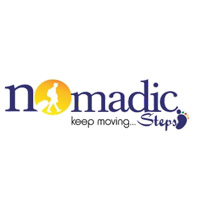
 8D/7N
8D/7N
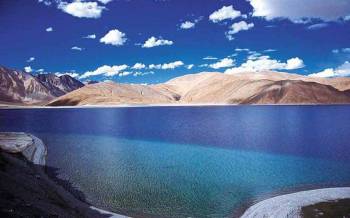 7D/6N
7D/6N
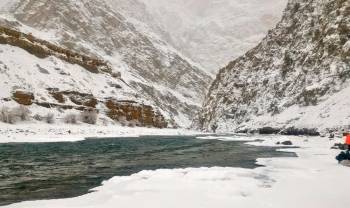 7D/6N
7D/6N
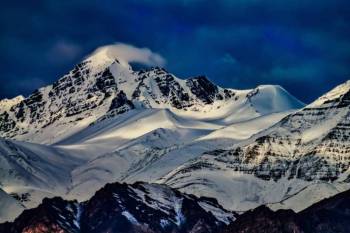 7D/6N
7D/6N
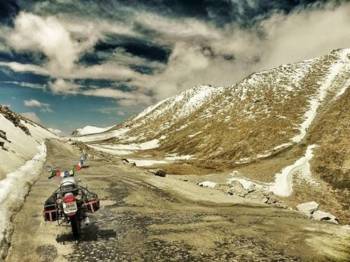 6D/5N
6D/5N
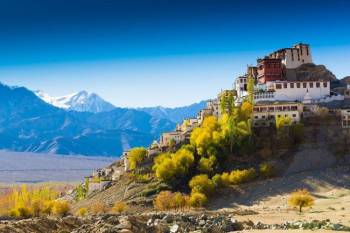 14D/13N
14D/13N
Kashmir - Ladakh 13 Nights 14 Days Tour
Katra - Srinagar - Pahalgam - Sonamarg - Leh Ladakh - Kargil - Gulmarg
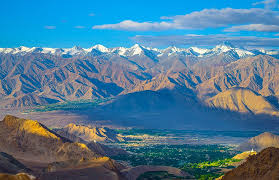 13D/12N
13D/12N
Glimpses Of Kashmir - Ladakh 12 Nights -..
Srinagar - Pahalgam - Sonamarg - Leh Ladakh - Kargil - Gulmarg
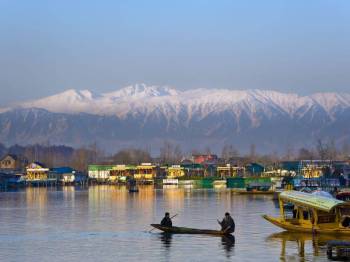 11D/10N
11D/10N
Kashmir - Ladakh 10 Nights 11 Days Tour
Srinagar - Pahalgam - Sonamarg - Leh Ladakh - Kargil - Gulmarg
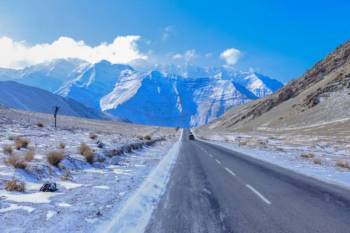 8D/7N
8D/7N
Kashmir - Ladakh 07 Nights 08 Days Tour
Srinagar - Sonamarg - Leh Ladakh - Kargil
 16D/15N
16D/15N
New Delhi - Bikaner - Jaisalmer - Jodhpur - Ranakpur - Jaipur - Agra - Mandawa - Ti..
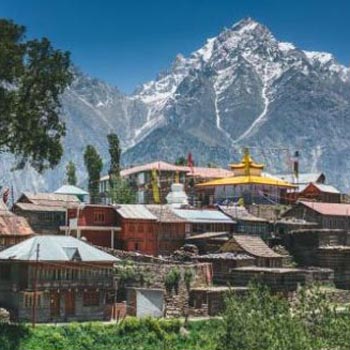 16D/15N
16D/15N
Shimla,Kinnaur,Manali,Amritsar Romantic ..
Shimla - Kinnaur - Manali - Amritsar
 16D/15N
16D/15N
Bikaner - Jodhpur - Jaisalmer - Mount Abu - Chittorgarh - Pushkar - Ajmer - Jaipur ..
 16D/15N
16D/15N
Golden Triangle with Yoga Meditation Tour
New Delhi - Agra - Jaipur - Rishikesh - Haridwar
 16D/15N
16D/15N
16 Days North & South India Tour
Agra - Jaipur - Bangalore - Periyar - Mumbai - Mahabaleshwar
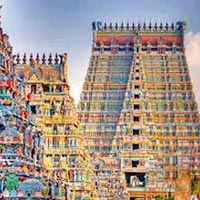 16D/15N
16D/15N
Mumbai - Goa City - Belgaum - Bagalkot - Badami - Hassan - Mysore - Bangalore - Hos..
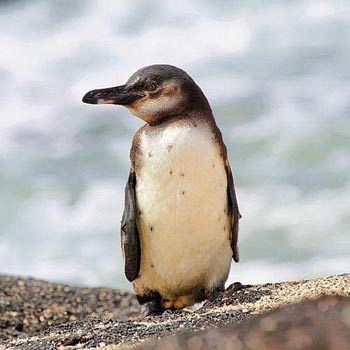 16D/15N
16D/15N
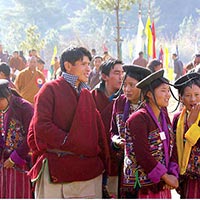 16D/15N
16D/15N
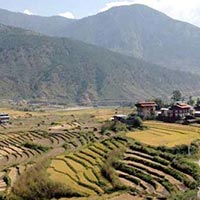 16D/15N
16D/15N
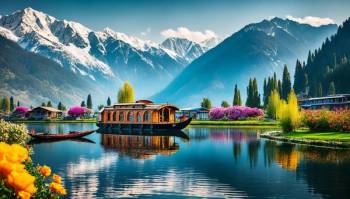 12D/11N
12D/11N
Kashmir Explorer 11 Nights - 12 Days Tour
Srinagar - Pahalgam - Sonamarg - Gulmarg - Budgam - Bandipora
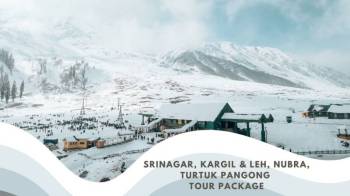 9D/8N
9D/8N
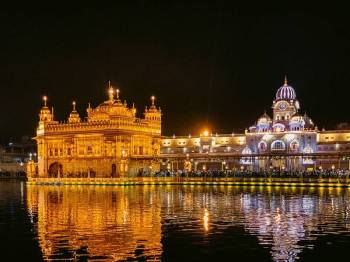 10D/9N
10D/9N
9 Night 10 Days Jammu And Kashmir With V..
Jammu - Katra - Patnitop - Srinagar - Amritsar - Pahalgam - Sonamarg - Gulmarg
 10D/9N
10D/9N
Jammu And Kashmir Tour Package 9 Night -..
Katra - Patnitop - Srinagar - Kashmir - Pahalgam - Sonamarg - Gulmarg
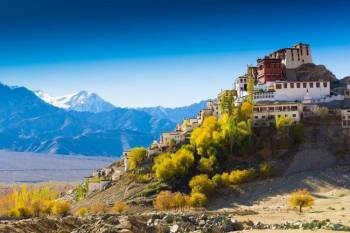 10D/9N
10D/9N
Jammu And Kashmir With Leh Ladakh Tour P..
Srinagar - Pahalgam - Leh Ladakh - Kargil - Gulmarg
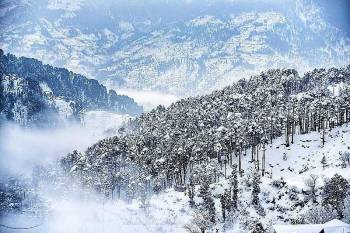 10D/9N
10D/9N
Jammu And Kashmir Tour Package 9 Night -..
Jammu - Katra - Patnitop - Srinagar - Pahalgam - Sonamarg - Gulmarg
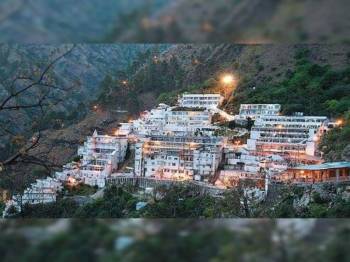 10D/9N
10D/9N
9 Night - 10 Days Jammu And Kashmir With..
Jammu - Katra - Patnitop - Srinagar - Pahalgam - Sonamarg - Gulmarg
 10D/9N
10D/9N
9 Night - 10 Days Jammu And Kashmir Tour..
Jammu - Katra - Patnitop - Srinagar - Amritsar - Sonamarg - Gulmarg
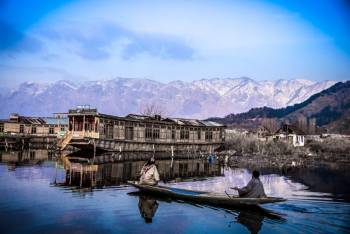 7D/6N
7D/6N